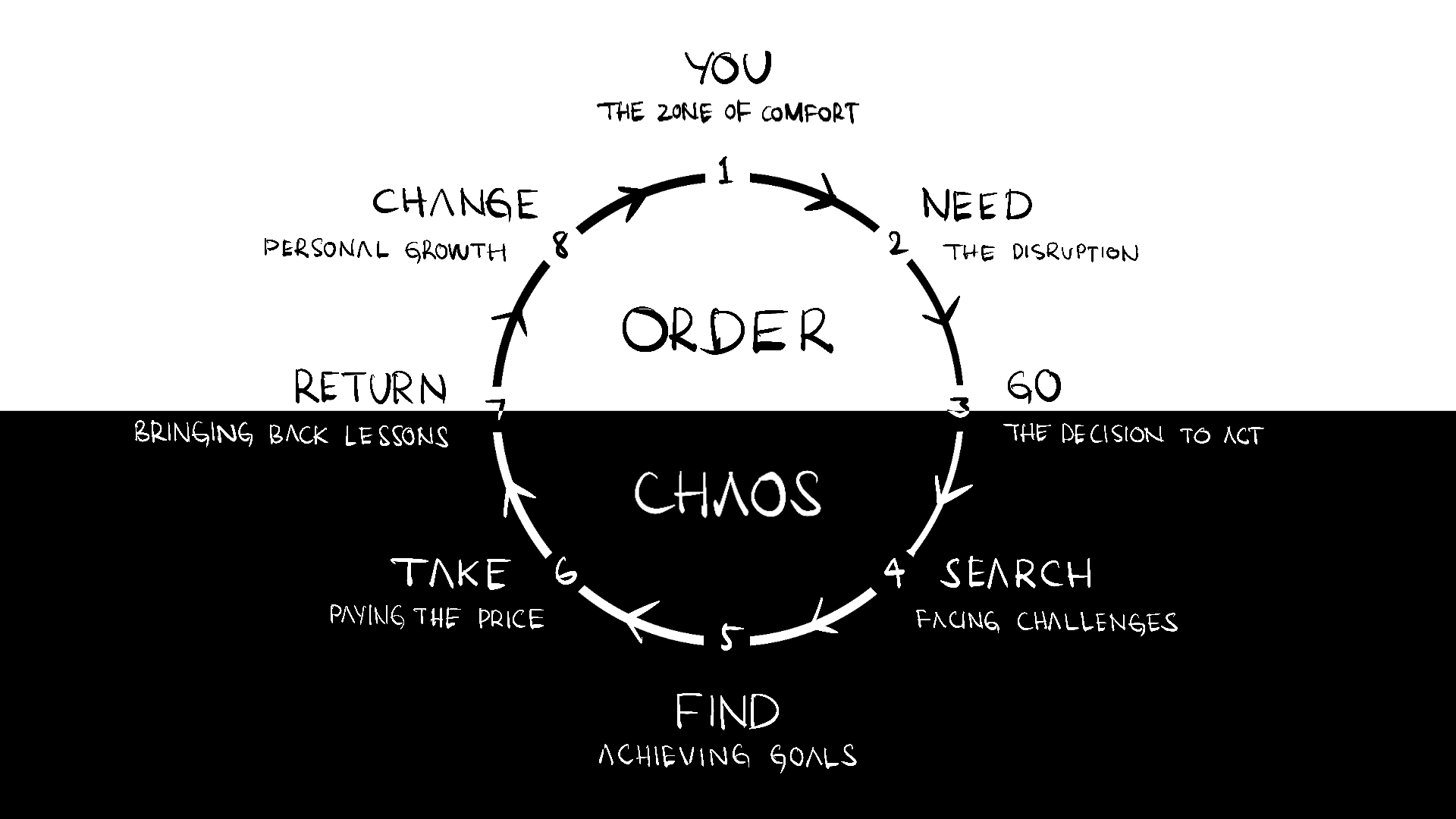Dan Harmon Story Circle

Storytelling is an art form that has captivated audiences for centuries, weaving tales of adventure, triumph, and transformation. While the concept of storytelling may seem abstract, there are underlying structures and frameworks that writers often use to craft compelling narratives. One such framework is the Dan Harmon Story Circle, developed by the renowned writer and creator of “Community” and “Rick and Morty.” In this blog post, we’ll take a deep dive into the eight stages of the Dan Harmon Story Circle, exploring each step in detail and providing examples to illustrate its application in storytelling.
1. You – The Zone of Comfort
Every story begins with a protagonist who is in a zone of comfort, where they feel safe and familiar. This stage establishes the status quo and introduces the audience to the protagonist’s ordinary world. For example, in “Batman: The Dark Knight,” Bruce Wayne operates as Gotham City’s vigilante protector, maintaining a delicate balance between his public persona and his alter ego as Batman.
2. Need – The Disruption
The protagonist encounters a need or a problem that disrupts their comfort zone, sparking the desire for change or adventure. This stage sets the story in motion by introducing conflict and establishing the protagonist’s motivation. In “The Dark Knight,” Gotham City faces escalating threats from the Joker, a deranged criminal mastermind who challenges Batman’s sense of justice and morality.
3. Go – The Decision to Act
The protagonist makes the decision to pursue what they need, committing to embark on a journey or adventure. This stage marks the beginning of the protagonist’s quest, as they set out to overcome obstacles and achieve their goals. In “The Dark Knight,” Batman decides to confront the Joker and bring an end to his reign of chaos, despite the personal risks and sacrifices involved.
4. Search – Facing Challenges
The protagonist faces challenges, obstacles, and encounters as they search for what they need. This stage is characterized by conflict and adversity, testing the protagonist’s resolve and pushing them to their limits. Throughout “The Dark Knight,” Batman grapples with ethical dilemmas, strategic setbacks, and personal losses as he battles against the Joker’s anarchic schemes.
5. Find – Achieving Goals
The protagonist finds what they were searching for, achieving their goal or obtaining what they need. This stage represents a moment of triumph and accomplishment, as the protagonist overcomes adversity and reaches their destination. In “The Dark Knight,” Batman ultimately apprehends the Joker and prevents his catastrophic plans from coming to fruition, restoring a sense of order to Gotham City.
6. Take – Paying the Price
The protagonist pays a price or makes a sacrifice to obtain what they need, facing consequences or challenges along the way. This stage introduces a moment of reckoning or realization, where the protagonist must confront the true cost of their desires. In “The Dark Knight,” Batman must grapple with the moral ambiguity of his actions and accept the sacrifices required to protect Gotham City from its darkest threats.
7. Return – Bringing Back Lessons
The protagonist returns to their familiar environment, bringing back what they have learned or gained from their journey. This stage marks the protagonist’s homecoming, as they reintegrate into their ordinary world with newfound wisdom or insight. In “The Dark Knight,” Batman reflects on the impact of his choices and recommits himself to his mission of defending Gotham City, despite the personal toll it may take.
8. Change – Personal Growth
The protagonist has changed as a result of their journey, having undergone personal growth or transformation. This stage represents the culmination of the protagonist’s arc, as they emerge from their journey fundamentally changed or evolved. In the final moments of “The Dark Knight,” Batman confronts his own limitations and embraces the mantle of the Dark Knight with renewed determination and resolve.
Conclusion
The Dan Harmon Story Circle provides a powerful framework for crafting compelling narratives with well-defined character arcs and thematic resonance. By understanding and applying each of the eight stages, writers can create stories that resonate with audiences on a deep and emotional level. Whether crafting a screenplay, novel, or short story, the Dan Harmon Story Circle offers a roadmap for navigating the twists and turns of storytelling and delivering satisfying and meaningful narratives.
